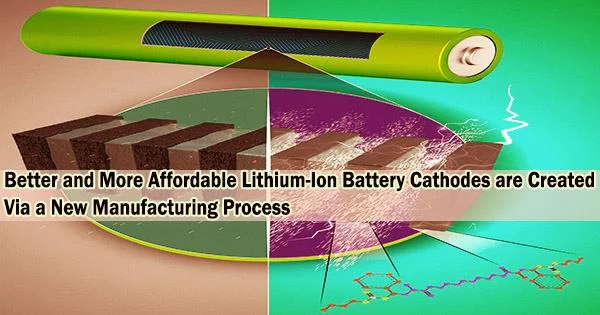A new process for manufacturing a vital component of lithium-ion batteries has been devised by scientists at the Oak Ridge National Laboratory of the Department of Energy. As a result of a quicker, less wasteful method that employs less harmful material, the battery is more reasonably priced.
A cathode and an anode with an electrolyte in between make up lithium-ion batteries, which are used in everything from cell phones to appliances and the majority of electric vehicles. In a process that transforms chemical energy into electrical energy, ions flow from anode to cathode through the electrolyte.
The emphasis on creating energy-dense cathodes sustainably has grown as a result of the push for decarbonization and the desire for electric vehicles. Traditional processing, however, has drawbacks.
The dependence on cobalt, a scarce metal mined and refined abroad, is the first barrier. The supply chains and transportation system used by American manufacturers are at risk as a result of this reliance on foreign suppliers.
The availability of cobalt is not the only complication. The proportion of other metals found in cathodes can also lengthen and increase the risk of the manufacturing process.
For instance, the widespread use of a chemical mixing technique for cathode manufacture that necessitates significant amounts of ammonia for corrosive reactions is a result of high nickel content. To lower acidity, the hazardous chemical is used, which raises costs, health and environmental problems, and water waste.
A patent is pending on the technology, which is ready to be scaled up for commercial production by industry. This cathode material can give more energy and decrease the cost of electric car batteries.
Rachid Essehli
In the Journal of Power Sources, researchers at ORNL announce that they have created a process for manufacturing a new category of high-capacity cathode materials without cobalt that is cleaner, less expensive, and more effective.
Their hydrothermal synthesis method crystalizes the cathode utilizing metals dissolved in ethanol rather than continuously churning cathode materials with chemicals in a reactor. The ethanol can be distilled after use and is safer to handle and store than ammonia.
“This novel process offers the key advantage of moving the cathode industry to cleaner and more cost-competitive production while putting less burden on our environment,” said ORNL’s Ilias Belharouak, the principal investigator for the project.
According to ORNL’s main researcher Rachid Essehli, the hydrothermal synthesis approach is also significantly quicker. Making particles and getting ready for the subsequent batch of cathodes takes only 12 hours instead of many days.
“In addition, the material produced has more uniform, round, tightly packed particles that are ideal for a cathode,” Essehli said.
The material created through this investigation proved superior at maintaining stability during the battery charge cycle, even though the ORNL team had already discovered other cobalt-free combinations that function.
Because its properties are similar to those of today’s cobalt-based cathodes, the new material can be seamlessly integrated into existing battery manufacturing processes.
“A patent is pending on the technology, which is ready to be scaled up for commercial production by industry,” Essehli said. “This cathode material can give more energy and decrease the cost of electric car batteries,” he said.
The DOE Office of Energy Efficiency and Renewable Energy’s Vehicle Technologies Office funded the research. It used resources of ORNL’s Center for Nanophase Materials Sciences and the Advanced Photon Source at Argonne National Laboratory. Both are DOE Office of Science user facilities.





